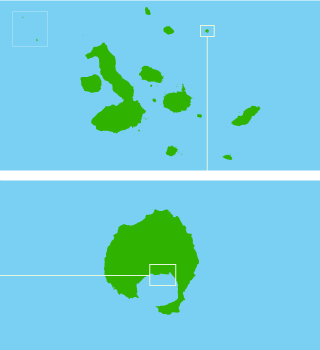|
Tower Island has a shield volcano; the crater is about 600 meters wide at the edges and a depth of 60 meters. The total route of the trail is approximately 1,500 meters. The trail is part coral sand and the other part is slabs of lava.
Initial highlights are the nesting colonies of the common frigate, the Nazca booby and the swallow-tailed gulls. We also find here nests of red-footed booby, which is the largest nesting colony of Galapagos for pelagic bird.
Swallow-tailed gulls feed at night on squid and fish. They usually nests in cliffs and rocks, but at this place they do so on sand to camouflage their black spotted eggs. When they nest on black substrate, they add pieces of black coral and on white substrate they add small lava rocks to their nests.
| 

![]()


![]()